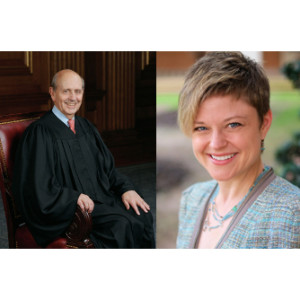Response by Professor Emily Hammond
Geo. Wash. L. Rev. Docket (Oct. Term 2014)
ONEOK, Inc. v. Learjet, Inc., 575 U.S. __ (2015)
Docket No. 13-271; argued Jan 12, 2015; decided April 21, 2015
Slip Opinion | Oyez | SCOTUSblog
The dispute in ONEOK, Inc. v. Learjet, Inc. concerned these state-federal jurisdictional boundaries. Notably, although the retail/wholesale distinction is supposed to create a bright-line limit,7 it functions poorly as a jurisdictional test in “mixed” cases—that is, circumstances in which a state or federal activity can be characterized as involving both retail and wholesale concerns.8 Take the ONEOK facts, which stemmed from the rampant energy price manipulations of the early 2000s commonly associated with the Enron scandal.9 During that time FERC was a reactive—not proactive—regulator, and the slurry of litigation and regulatory fixes that followed included a number of state-law claims.
In ONEOK, natural gas purchasers filed state-law antitrust claims against pipelines, arguing they had paid too much because of the pipelines’ price manipulation.10 The critical point is that the defendant-sellers’ anticompetitive practices affected both the jurisdictional wholesale markets and the nonjurisdictional retail markets.11 The pipelines moved for summary judgment, arguing that the state-law claims were preempted by the NGA because “practices affecting” wholesale rates were exclusively within FERC’s jurisdiction.12
Justice Breyer’s majority attacks the problem using an apparently new test: courts must consider “the target at which the state law aims in determining whether [the] law is pre-empted.” Measures aimed directly at the wholesale markets should fail, while measures aimed at general business conduct—including antitrust measures—should stand.14 This analysis is dissatisfying because it is so easily malleable; it puts immense pressure on how an activity is characterized and foreshadows results-oriented analyses. Further complicating matters is the majority’s view of FERC’s authority: notwithstanding that states may regulate some matters affecting both retail and wholesale markets, FERC may do the same.15 Conflicts, the Court states, can be considered as they arise.16 The standard thus suffers from more than its case-by-case indeterminacy—a criticism lodged in Justice Scalia’s dissent.17 In mixed cases, it is even less useful than the retail/wholesale distinction made in the energy acts themselves.
The Court’s opinion—teed up to focus only on field preemption—could arguably be confined to that specific topic.18 But consider that preemption—a matter of congressional intent carrying the force of the Supremacy Clause19—is the sibling to agency authority—a matter of congressional intent authorized (in these circumstances) by the Commerce Clause.20 If one takes the Attleboro gap seriously, then the energy statutes should be understood to contemplate the entire universe of state and federal energy regulation. It follows that the Court’s preemption analysis tells us something not just about what states may do, but what FERC may do. And energy law is facing significant pressures to navigate those boundaries.
The Court has before it petitions for certiorari in three additional cases that parse the jurisdictional boundaries. Two involve states’ efforts to incentivize the construction of new electricity generation.21 In these, Maryland and New Jersey, which have restructured their retail electricity markets, undertook to subsidize the construction of new generation because the states believed that the wholesale markets were not sufficiently incentivizing such construction. In both cases, the circuit courts held that these initiatives were preempted by the FPA because—although they involve traditional state authority over construction of electricity generating facilities—the states were also impacting the wholesale markets.22 The other case involves FERC’s ability to regulate demand response (DR)—practices by which entities sell aggregated electricity demand reduction in the wholesale markets.23 In this case, the circuit court held that FERC lacked jurisdiction over DR practices because—although they affect the wholesale markets—they also involve consumer behavior at the retail level.24
With so much regulatory uncertainty for both state public utility commissions and FERC, the concern is that a sub-Attleboro gap will form: in a time when a robust energy regulatory policy is critically needed, it will go underdeveloped. The Environmental Protection Agency’s proposed Clean Power Plan exposes the salience of this concern as well as its urgency.25 The Plan relies on states to choose means for dramatically reducing the electricity sector’s greenhouse gas emissions, but states are struggling to understand what options are permissible given the FPA’s uncertain reach. For example, some Midwestern states are considering ways to compensate nuclear power for its attributes that go uncompensated on the wholesale markets.26 Otherwise, these states face plant closures, the loss of a low-carbon source of significant electricity, and a struggle to comply with EPA’s mandate. But at what “target” would states be “aiming”? Wholesale markets, electricity generation, greenhouse gas emissions—something else? And if FERC “aims” at, say, the value of carbon on the wholesale markets (a target that is mixed with state electricity generating concerns), are we left with only conflict preemption to sort out the complicated relationship between states and two different federal agencies?
Let’s hope those pending cert petitions are granted—and that future decisions bring more, not less, clarity.
1. See Pub. Util. Comm’n of R.I. v. Attleboro Steam & Elec. Co., 273 U.S. 83, 89–90 (1927) (rejecting state commission’s rate order for interstate sale of electricity on dormant Commerce Clause grounds); Mo. ex rel. Barrett v. Kan. Natural Gas Co., 265 U.S. 298, 307–08 (1924) (same for natural gas).
2. 16 U.S.C. § 824.
3. 15 U.S.C. § 717(b).
4. Ky. Util. Co. v. FERC, 760 F.2d 1321, 1325 n.6 (D.C. Cir. 1985) (“It is, of course, well settled that the comparable provisions of the Natural Gas Act and the Federal Power Act are to be construed in pari materia.”).
5. Fed. Power Comm’n v. S. Cal. Edison Co., 376 U.S. 205, 214 (1964).
6. FPA § 206, 16 U.S.C. § 824e (electricity); NGA § 5, 15 U.S.C. § 717d(a) (natural gas).
7. 376 U.S. at 214.
8. The courts frequently confront mixed cases. For a small sample, see generally New York v. FERC, 535 U.S. 1 (2002) (upholding FERC’s open-access transmission requirements); Ark. Elec. Coop. v. Ark. Pub. Serv. Comm’n, 461 U.S. 375 (1983) (applying Commerce Clause balancing test but leaving state retail authority largely intact); Fed. Power Comm’n v. Conway Corp., 426 U.S. 271 (1976) (holding FPC may consider relationship of wholesale rates and retail rates when making just-and-reasonable determination); S.C. Pub. Serv. Auth. v. FERC, 762 F.3d 41 (D.C. Cir. 2014) (upholding Order 1000 notwithstanding its relationship to state transmission siting authority) 762 F.3d 41 (D.C. Cir 2014); Conn. Dep’t of Pub. Util. Control v. FERC, 569 F.3d 477 (D.C. Cir. 2009) (upholding FERC regulation of capacity market).
9. For more details, see FERC, FINAL REPORT ON PRICE MANIPULATION IN WESTERN MARKETS, No. PA-02-2-000 (Mar. 26, 2003); Enron Power Mktg., Inc., 103 FERC ¶ 61,343 (2003).
10. ONEOK, Inc. v. Learjet, Inc., No. 13-271, slip op. at 8 (Apr. 21, 2015).
11. See id. at 9 (describing mixed nature of case).
12. Id.
13. Id. at 11 (emphasis in original).
14. Id. at 11-13.
15. Id. at 10.
16. Slip op. at 16.
17. Slip op. at 7–9 (Scalia, J., dissenting).
18. See slip op. at 16 (emphasizing conflict preemption was open question).
19. For current research on the preemption issue, see Jim Rossi, The Follies of Field Preemption (working paper 2015) (on file with author).
20. For current research on the jurisdictional authority issue, see Joel B. Eisen, Practicing Federalism in Regulated Markets (working paper 2015) (on file with author).
21. PPL Energyplus, LLC v. Solomon, 766 F.3d 241 (3d Cir. 2014), pet’n for cert. filed Dec. 10, 2014 (holding New Jersey effort to compensate new generation for capacity market disparities was preempted by Federal Power Act); PPL Energyplus, LLC v. Nazarian, 753 F.3d 467 (4th Cir. 2014), pet’n for cert. filed Nov. 26, 2014 (similar).
22. 766 F.3d at 253; 753 F.3d at 475–76.
23. Elec. Power Supply Ass’n v. FERC, 753 F.3d 216 (D.C. Cir. 2014), pet’n for cert. filed Jan. 15, 2015 (holding Order 745 invalid as beyond FERC’s jurisdiction and concluding pricing rationale was arbitrary and capricious).
24. Id. at 220–24.
25. See generally Proposed Rule: Carbon Pollution Emission Guidelines for Existing Stationary Sources: Electric Utility Generating Units, 79 Fed. Reg. 34,830 (June 18, 2014).
26. For a full discussion, see generally Emily Hammond & David B. Spence, The Regulatory Contract in the Marketplace, 69 Vand. L. Rev. (forthcoming Jan. 2016), available at http://ssrn.com/abstract=2584619.
Recommended Citation:
Emily Hammond, Response, ONEOK v. Learjet, Geo. Wash. L. Rev. Docket (April 28, 2015), http://www.gwlr.org/oneok-v-learjet/.



